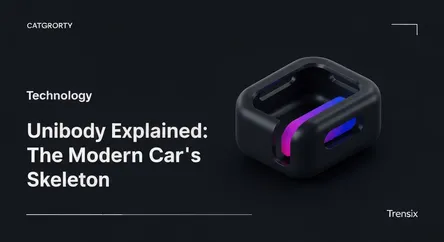Technology
Unibody Explained: The Modern Car's Skeleton

Discover unibody construction, the single-piece frame and body design that makes modern cars lighter, safer, and more fuel-efficient.
What is it?
Unibody, short for 'unitized body,' is a type of vehicle construction where the car's frame and body are manufactured as a single, integrated structure. Unlike the traditional body-on-frame method where a separate body is mounted onto a rigid chassis, a unibody design uses the external skin and internal supports to provide structural integrity. This monocoque approach, where the 'shell' carries the load, is now the standard for the vast majority of passenger cars, crossovers, and SUVs.
Why is it trending?
Unibody construction is trending because it offers significant advantages in modern vehicle design. By integrating the frame and body, manufacturers can create vehicles that are substantially lighter than their body-on-frame counterparts. This weight reduction directly translates to better fuel economy and more responsive handling. Furthermore, a unibody structure is inherently more rigid, which improves ride quality, reduces noise, and allows engineers to design highly effective crumple zones for enhanced safety in a collision.
How does it affect people?
For the average driver, the shift to unibody design means a safer, more comfortable, and more economical driving experience. The enhanced structural rigidity provides better protection during an accident and contributes to a quieter, smoother ride. The lighter weight helps save money at the gas pump. The primary trade-off is that unibody vehicles typically have lower towing capacities than body-on-frame trucks and can be more complex and expensive to repair after severe structural damage.